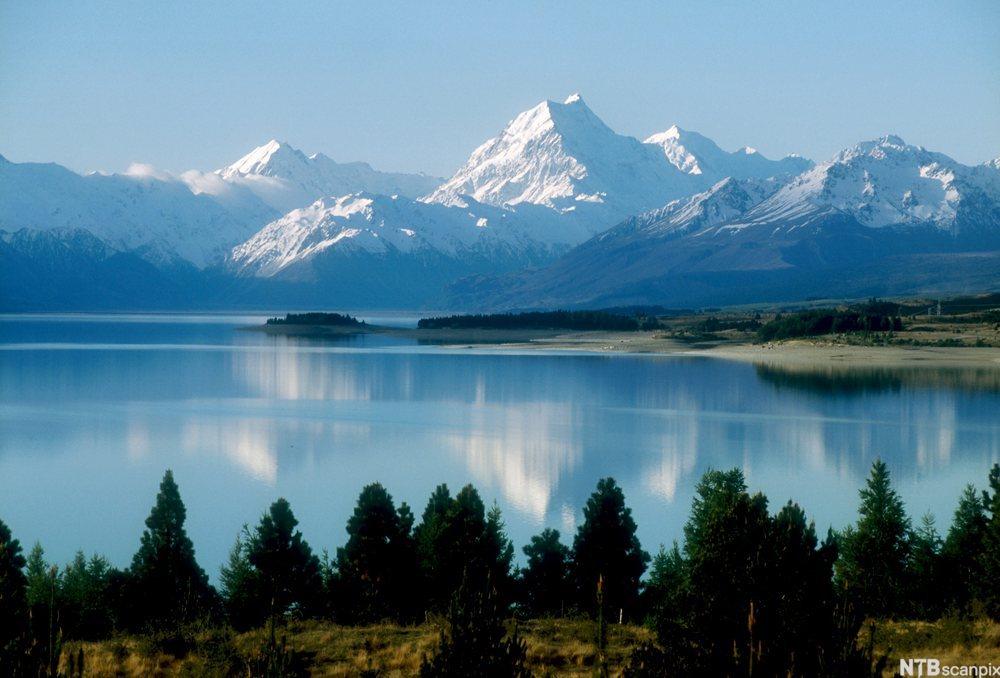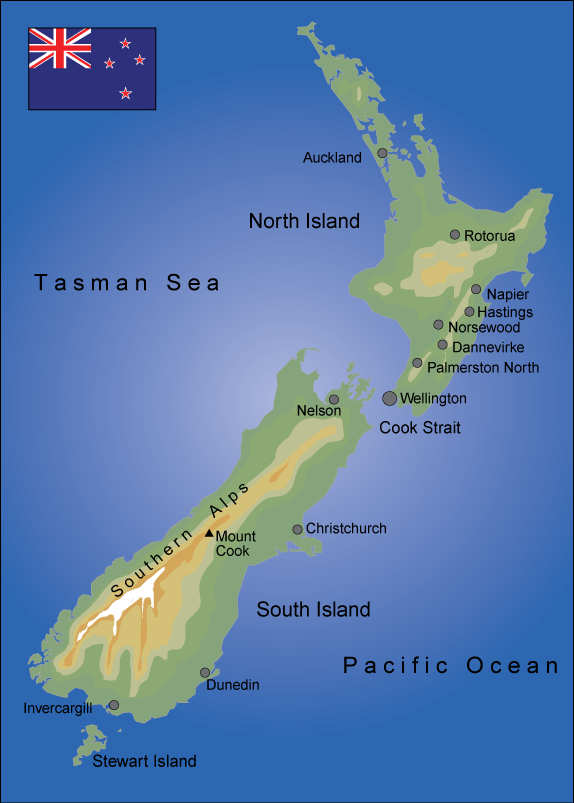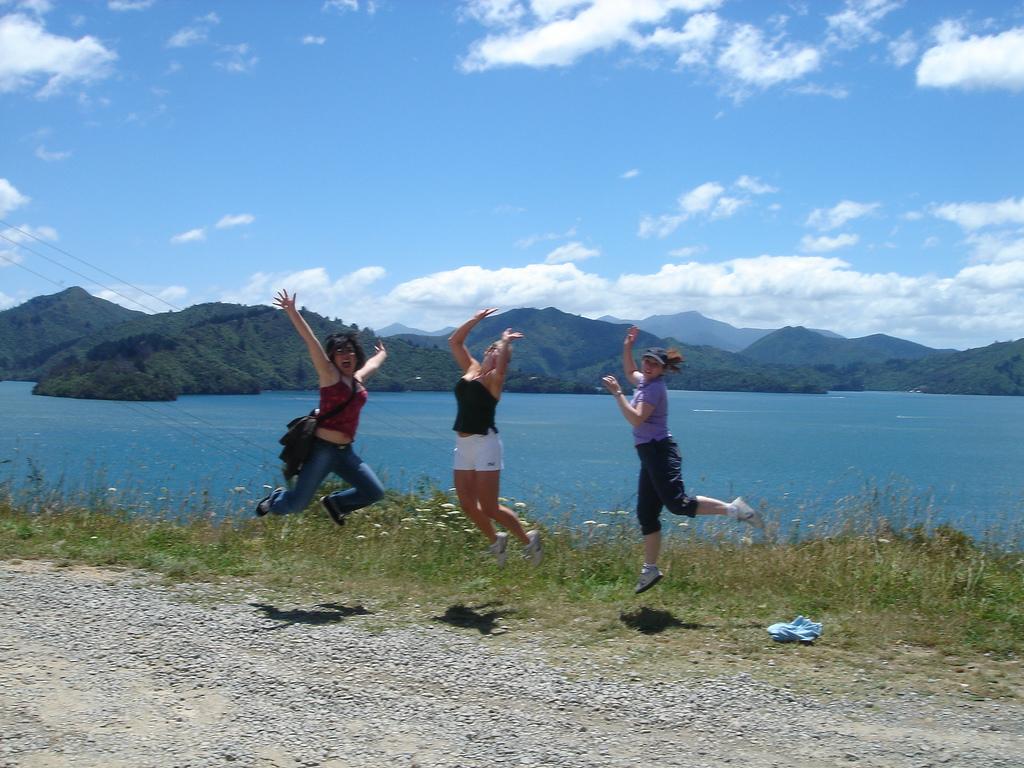An Introduction to New Zealand

The population of New Zealand is 4.3 million and is mostly comprised of people of European descent; the indigenous Māori are the largest minority. Asians and non-Māori Polynesians are also significant minority groups, especially in urban areas. The most commonly spoken language is English.
New Zealand is a developed country that ranks highly in international comparisons of the world's best places to live. The country also has numerous smaller islands, most notably Stewart Island/Rakiura and the Chatham Islands.

New Zealand is notable for its geographic isolation. Situated about 2000 km southeast of Australia, across the Tasman Sea, its closest neighbours to the north are New Caledonia, Fiji and Tonga.
The two main islands together make the country the 75th largest in the world, giving it a little-brother status to Australia. The capital city of New Zealand is Wellington, though most are more familiar with Auckland, which is the largest city.
It is unknown whether the Māori had a name for New Zealand as a whole, before the arrival of Europeans. What is known, is that they referred to the North Island as Te Ika a Māui ("the fish of Māui") and the South Island as Te Wai Pounamu ("the waters of greenstone") or Te Waka o Aoraki ("the canoe of Aoraki"). Until the early 20th century, the North Island was also referred to as Aotearoa ("land of the long white cloud"); in modern Māori usage, this name refers to the whole country.
Economically, New Zealand is managing a lot better now than in the 1970s and 1980s. Earlier, New Zealand’s export market was the United Kingdom, where they exported massive quantities of meat and dairy products. When Britain joined the European Union in the 1970s, part of the deal was that Britain should import from the other EU countries. This lead to an economic catastrophe for New Zealand.
Many people actually left New Zealand to settle in Australia, and political measures were taken to better the situation. Now things look a lot more optimistic. Agriculture continues to be the main export industry in New Zealand, and in 2007 a New Zealand dairy cooperative controlled almost one-third of the international dairy trade.
Other export items of New Zealand are meat, wood, fruit and fish. New Zealand also has a thriving wine industry.

The tourism industry plays an important role in New Zealand’s economy and is the country's biggest 'export' earner, with about 3.8 million tourists (2019) visiting per year. New Zealand is marketed as a "clean, green" adventure playground, with typical destinations being nature areas such as Milford Sound and the Tongariro Alpine Crossing, while activities such as bungee jumping or whale watching exemplify typical tourist attractions.
Because of its long isolation from the rest of the world and its island biogeography, New Zealand has extraordinary flora and fauna. However, the country has suffered a high rate of wildlife extinctions. This is mainly due to human activities such as hunting and pressure from introduced animals, such as weasels, stoats, cats, goats, deer and brush-tailed possums. Five indigenous vascular plant species are now believed to be extinct, including Adam's Mistletoe and a species of Forget-me-not (a small, blue flower).
New Zealand has led the world in island restoration projects, where offshore islands are cleared of introduced mammalian pests and native species are reintroduced. Several islands located near the three main islands are wildlife reserves, where common pests such as possums and rodents have been eradicated to allow the reintroduction of endangered species to the islands.
On the brighter side, the Kea Parrot of New Zealand is alive and well and is probably the rudest bird on earth! It is not at all afraid of humans, and doesn’t say no to a nibble at people’s tires or windshield wipers, or even their fingers, if it gets close enough.
Tasks and Activities
Comprehension
- New Zealand - Multiple Choice
- Describe the location of New Zealand. What are its neighbouring countries?
- What names have the Maori given the islands of New Zealand? What might these names say about the islands' nature?
- What is New Zealand's economy based on?
- What measures is New Zealand taking to restore the country's natural habitat?
- What nasty habit is the Kea Parrot known for?
Tourist Advertisement
Make a brochure or advertisement for New Zealand to lure tourists to these beautiful islands. Base your information on what you can see in the film 'New Zealand a Dream' (8 min). You will find the film on YouTube by searching for its name.
Writing
Watch the film 'Backpacking in New Zealand' (6 min) by Carlos Costa. You will find the video on YouTube by searching for its name. Write a letter back home or an entry in a travel blog based on what this guy experiences. Find a suitable title for your text.
Relatert innhold
New Zealand is considered one of the world's best places to live.